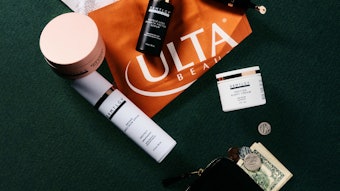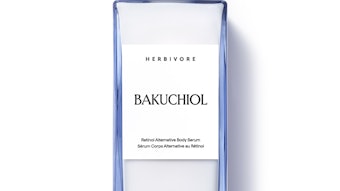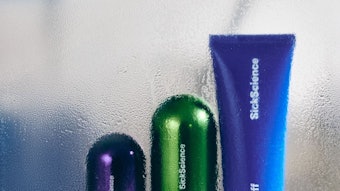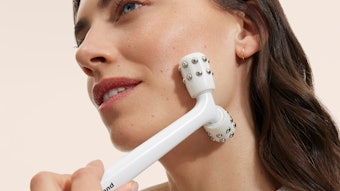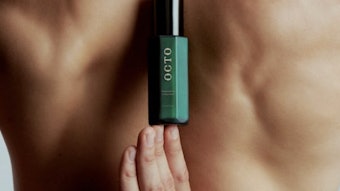- Although the body care segment has seen rough times recently, there are distinct opportunities beauty brands can take advantage of in body care.
- Brands offering body care products with sustainability and ethical harvesting claims are seeing a boost from consumers, as well as having interesting stories to tell.
- Beyond moisturization, body slimming products also continue to be a stealthily growing body care category, as consumers seek efficacious products that don’t monopolize their time or money.
It hasn’t all gone smoothly in the body care market for the past few years. Research firm Mintel reported a 10% drop in sales in the U.S. between 2007–2012, and while some of the free fall may have been due to the lagging economy (23% of regular consumers claim to buy what’s on sale rather than a specific brand), the category is beginning to once again find opportunities through innovation. [For more on the market, read Euromonitor International’s “Bath & Body Hunts for New Consumers” report.]
“When it comes to body care, customers have and always will request one thing: results,” says Lenette Casper, president and CEO, Phytomer USA. Indeed, Mintel also reports that only 27% of body care consumers claim to have discovered a lotion that works well for them.
This offers a lot of room for opportunity for body care brands. Through more efficacious products and delivering upon promises of responsibly sourced ingredients, the body care market—and the brands within it—can only advance.
Actively Sustainable
Consumers’ eco-consciousness continues to grow, and according to Mintel, nearly a third of those purchasing body care products are seeking more eco-friendly personal care products. They’re not willing to compromise on efficacy either, thus brands that can deliver both are poised for success.
The Plantacare and Plantaren ingredients, based on the APG range from BASF Care Creations, are sugar-based surfactants made from renewable, plant-derived sources. “For face and body cleansers, liquid soaps, baby washes and wipes, these glucoside surfactants offer gentle cleansing with good foaming properties,” says Laura Partynski, marketing communications manager, BASF. “They are gentle on the skin, and are perfect for sensitive skin formulations.”
Croda’s Sederma division offers a host of eco-friendly ingredients developed through its HTN (High Tech Nature) Plant Cell Amplification method. Sonia Dawson, marketing manager, botanicals, Croda, explains, “This proprietary process is an eco-friendly and highly sustainable means for the precise selection and amplification of the most desired natural molecules, reaching levels far greater than those achieved from traditional means. It is through this high level of active concentration that we deliver measurable cosmetic benefits.”
The Biointec marine biotechnology range of products from Lipotec also works well for sustainable body care. “Naturally occurring, non-genetically modified organisms are used to manufacture cosmetic ingredients by biotechnology means, achieving a sustainable production of actives from the sea and preserving the environment, since there is no harvesting, or extracting from nature,” says Cristina Davi, product manager coordinator at Lipotec’s Barcelona headquarters.
Ethical Sourcing
When body care products do include natural resources in the ingredient list, consumers appreciate responsible sourcing as well. “We source as many ingredients locally as possible, and many are actually grown on our organic farm,” says Tata Harper, owner of the eponymous skin care line. “We produce our products in a vertically integrated facility in Vermont, so there is very little shipping involved and overall a small carbon footprint for our production.”
Phytomer Group’s botanical brand, Fleur, sources Moroccan argan oil and simultaneously helps support microenterprise. “[The argan oil] is supplied through the Targanine network in Morocco, a cooperate organization of Berber women who plant argan trees to prevent desertification,” says Casper. “Selling this traditionally harvested, high-quality raw material provides the women with income to have a good standard of living and helps with literacy and education programs.”
Victor Morrison, CEO of Dr. Hauschka Skin Care, notes the brand was approached this year by Whole Foods to meet the chain’s non-GMO certification requirement, and could show it has been compliant in this area since 1967. “We must stay true to our reputation as both natural skin care experts and purveyors of products manufactured from the finest ingredients available,” says Morrison. “Often, that requires that we develop direct relationships with growers, and, in some cases, that we assist in establishing a channel for key ingredients. To this end, Dr. Hauschka Skin Care has ethical sourcing and fair trade alliances worldwide. These relationships ensure the quality of key ingredients, including shea butter, essential rose oil and mango butter.”
A Good Feeling
In the body care category, it’s key that a product delivers results and a good story, but it also has to feel good on the body. “The sensory experience of personal cleansing formulas is important, where that tactile experience can be a deciding factor in if a consumer will be a repeat purchaser,” says Partynski. “Delivering longer-lasting fragrance, having nice, plush foam properties and rinsing clean are some examples.”
“Lubrizol’s versatile offerings of rheology modifiers and emollients enable the development of a wide variety of appealing textures and product forms with the right spreading and quick absorption to turn a simple body care application into a full sensorial experience,” says Marie Ollagnier, global strategic marketing manager, skin care, Lubrizol.
Harper agrees that delivering sensory benefits is a must, especially in time for winter. “We’ll be releasing a Fortifying Body Lotion early in the year,” says Harper. “It’s a 100% natural, super rich, deeply hydrating formula that targets aging in the skin by helping to promote elasticity, strengthen the skin and firm the appearance of the skin.”
And according to Jennifer Donahue, marketing manager, skin care, Croda, “One of our focus areas has been to deliver ingredients with unique sensory benefits. In 2014, we will launch the first in a line of sensory-driven emollients, Sensemol LST, which is a high-spreading emollient that leaves a light, silky touch on the skin. The emollient choice is an important finishing step in determining formulation aesthetics, and Sensemol LST can be used in a variety of formulations due to its pH range stability and overall compatibility.”
Slimming is Growing
When a brand can deliver on claims regarding a product’s slimming and contouring properties, it’s usually thanks to innovative active ingredients. “Slimming is always an unmet need, as customers are looking for higher-volume reductions in less time,” explains Davi. “We developed a campaign last year with two new peptides to regulate body volume for the desired silhouette. [Lipotec’s] Silusyne functional ingredient and Adifyline peptide offer the required slimming or replenishing effect respectively to shape the body as desired.”
Phytomer also has seen success in this area, notably with a night-specific product. “Phytomer recently launched Glycolight Night Contouring Bi-Gel, which is formulated to match the biorhythm of the body to target fat cells through the night using powerful marine extracts and vectorized caffeine. It’s the first product of its kind; conceptually like a topical ‘diet,’” says Casper.
“Without giving too much away, Phytomer [also] has new slimming and cellulite-fighting treatments and products launching in 2014.”
Savvy brands will monitor growth of slimming and contouring products in body care, as they may kick the category into higher gear in the next year and beyond. “For the body care category, it is important to keep an eye on what is happening in the facial skin care category and in the sport/fitness or plastic surgery industries, as skin appearance improvement is a critical goal for consumers,” concludes Ollagnier.
Lisa Doyle was formerly the associate editor of GCI magazine and is a freelance writer in the Chicago area. Her work has appeared in Skin Inc. magazine, Salon Today, America’s Best, Renew and Modern Salon.
